Forty years ago the last surviving rural passenger branch line in Northumberland closed. This was the Haltwhistle to Alston Railway, which although earmarked for closure as part of the Beeching cuts in 1963, miraculously survived up until May 1, 1976. Trevor Gregg looks back at the history of the railway and its route through the beautiful valley of the River South Tyne.
The area around Haltwhistle and Brampton was rich in minerals, principally coal, and for its successful exploitation, transport was needed to move the coal from the mines to the markets.
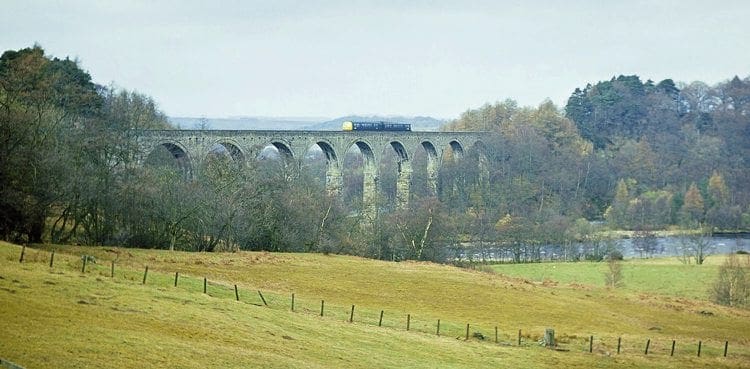
In 1798 a horse-drawn waggonway was built from Brampton to Tindal Fells and Talkin, south-east of Brampton. Lord Carlisle, the major landowner in the area, was developing his Naworth coalfield and this waggonway transported the coal to Brampton, where it was then carried by road to Carlisle and Penrith.
In 1824 the waggonway was converted to a railway and at the same time was also extended further east towards new collieries, which his lordship had opened. George Stephenson personally inspected the construction of the railway and his locomotive Rocket worked the route for a few years after being sold by the Liverpool & Manchester Railway.
Enjoy more Heritage Railway reading in the four-weekly magazine.
Click here to subscribe & save.
Built on own land
This railway system, which was known as Lord Carlisle’s Railway, was unique as it required no Act of Parliament to authorise construction as it was being built on his own land. Lord Carlisle was also a keen supporter of the promoters of the Newcastle to Carlisle Railway, and after an Act of Parliament was given in 1829, construction work started, with the railway fully opening in 1838.
A junction was made at Brampton, with Lord Carlisle’s Railway allowing his coal now to be moved to Carlisle by rail. In 1849 a further easterly extension was made to Lord Carlisle’s railway system when it was extended to a new colliery at Lambley, in the South Tyne Valley.
At Alston, 13 miles south of Haltwhistle, there were some coal deposits, but the principal mineral being mined was lead, which had been mined in the Alston area and around Nenthead, just south of Alston, since Roman times. By the early part of the 19th century the area known as Alston Moor had become one of the leading lead ore producers in the UK.
The influential London Lead Company held many of the mining leases on Alston Moor and it was desperate to get a railway link to export its ore. In response to this the Board of the Newcastle and Carlisle Railway approved a plan for a railway to be constructed from Haltwhistle to Alston and then on to Nenthead. This was not an easy route, requiring a climb of more than 1,100 feet in 18 miles. Lord Carlisle supported this plan as he saw it offered him an easterly route for the export of his coal from the new colliery at Lambley.
Extremely challenging
The Newcastle to Carlisle Railway Company quickly submitted an application to Parliament. There was, however, another application which was from subsidiaries of the Stockton to Darlington Railway.
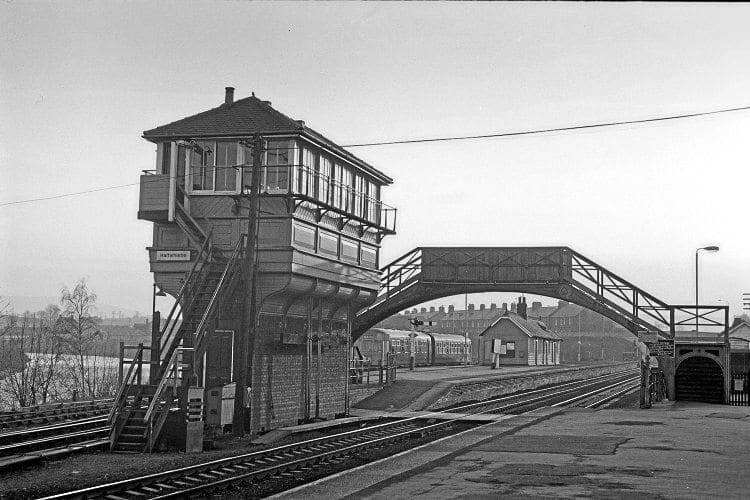
Their proposal involved a route up the Wear Valley from Frosterley, in County Durham, to Stanhope and then on to Nenthead and Alston. It would then continue on through Kirkhaugh and Lambley down to Milton on the Newcastle to Carlisle Railway.
This proposed route would have been extremely challenging, requiring considerable earthworks, a summit of 1525 feet, and a tunnel of just over two miles long. Not surprisingly the Newcastle and Carlisle Railway Company proposal proved to be successful, with Parliamentary approval given in 1846.
There then followed a period of inactivity during which time consideration was given to various alterations to the proposed route from Haltwhistle, which would require two major viaducts to cross the River South Tyne, one at Haltwhistle and one at Lambley.
The Board of the Newcastle and Carlisle Railway thought a considerable saving could be made if at Lambley they joined on to Lord Carlisle’s Railway and followed his route down to Brampton, thereby avoiding the need for the two expensive viaducts.
His lordship, however, was not impressed as he wanted the eastern route for the export of his coal, and as his coal provided considerable income to the Newcastle and Carlisle Railway he had the final word. So, finally, in 1849, a new Parliamentary approval was given for the Newcastle and Carlisle Railway to construct the line from Haltwhistle to Alston.
In this approval, the steeply graded extension to Nenthead was dropped and this allowed the final section into Alston to follow an easier route, terminating just outside Alston town centre. Construction quickly started and the 4¼ miles from Haltwhistle to Coanwood was opened to goods in March 1851 then passengers on July 9. The whole route was opened on November 17, 1852 when Lambley Viaduct was completed, allowing the section between Coanwood to Lambley to be opened.
At the same time a one-mile section from Lambley Colliery, on Lord Carlisle’s Railway, to Lambley station was opened, giving his lordship the eastern route he was looking for. Although constructed with single track throughout, provision was made for double track other than over Lambley Viaduct; the line, however, remained single track throughout its life.
Breached by A69 bypass
At Haltwhistle the branch had its own platform next to the Newcastle to Carlisle platform.
A turntable just beyond the platform gave provision for locomotives working the branch to be turned. The branch left Haltwhistle in an easterly direction, on a gradient of 1-in-100,
curving south as it crossed a viaduct over the River South Tyne. The viaduct, named the Alston Arches, still remains; a six-arch structure, which is grade 2 listed. However, the embankment south of the viaduct has been breached by the A69 Haltwhistle bypass.
The line continued climbing south for a further three miles on gradients of up to 1-in-70 before arriving at the first station – Featherstone, which was renamed Featherstone Park in 1902. This had a single platform, a stone station house and a signalbox controlling a level crossing.
The next station was Coanwood, again with a single platform, but this time there was a passing loop mainly provided for the nearby colliery. Coanwood was originally named Shaft Hill, and until the opening of Lambley Viaduct was the southern terminus of the section from Haltwhistle. It was closed in 1853 following the opening of Lambley Viaduct, but reopened in 1863 and was then renamed Coanwood in 1885.
Immediately after Coanwood the picturesque Lambley Viaduct is reached. This impressive Grade II-listed viaduct, spanning the South Tyne River, is 264m long; it has nine arches of 17m span, with three approach arches at each end. With a height of 32m above the river and a single track width of 3.5m this gives the viaduct an elegant and slender appearance.
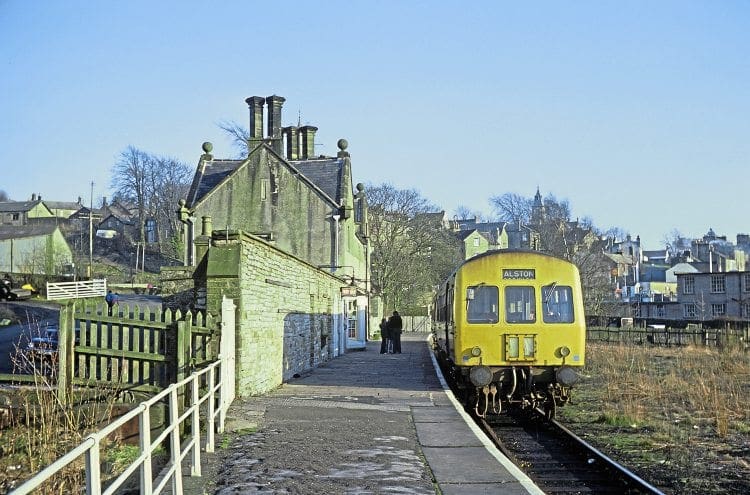
Lambley station was situated at the south end of the viaduct on a sharp curve just beyond the junction onto Lord Carlisle’s Railway. The junction was far from ideal; it faced north and with no run round facilities at Lambley, coal trains had to be propelled off Lord Carlisle’s Railway before proceeding south over the viaduct. The station was situated on a narrow ledge above the river and had no road access. It originally comprised of only a stone-built stationmaster’s house and a signalbox, but in 1890 the platform was extended and wooden buildings, comprising of a waiting room and toilets, were added.
Double-skew structure
Continuing south and just before Slaggyford station the third most significant viaduct on the railway is reached – Burnstones, another Grade II-listed structure, which carries the railway over Thinhope Burn and the A689 Alston to Brampton road. It is a very unusual double-skew structure, the direction of the flowing burn creates one skew and the road then creates a skew in the opposite direction and where the two skews meet there is a blind arch.
Slaggyford station, the last station in Northumberland, was similar to the other stations on the line with a single platform, a stationmaster’s house, and wooden buildings for the waiting room and booking office.
Just before arriving at Alston the railway crosses Gilderdale Burn on a small viaduct, again Grade II listed, and this structure marks the boundary between Northumberland and Cumbria.
Alston station is situated on a level piece of land next to where the River Nent joins the River South Tyne. The station building is a very impressive Grade II-listed stone-built Tudor-style structure, very similar to some of the stations constructed on the Newcastle and Berwick Railway. The station had a single platform and a train shed covering part of the platform and an adjacent track used as a carriage siding.
A small single-road engine shed was provided and at the southern extremity of the station was a turntable. There were several sidings, a goods depot and coal drops, livestock pens and occasionally the coal drops were used to handle lime. A line from the goods depot continued on through a tunnel under the main road to the town’s gasworks.
There was never a frequent passenger service on the branch. In 1863 there were three return services on weekdays and by 1910 this was increased to four, with an extra train on a Saturday. In the summer of 1946 there were eight weekday return trips, but by 1954 this had reduced to five on weekdays and seven on Saturdays, which continued right up to the closure of the branch.
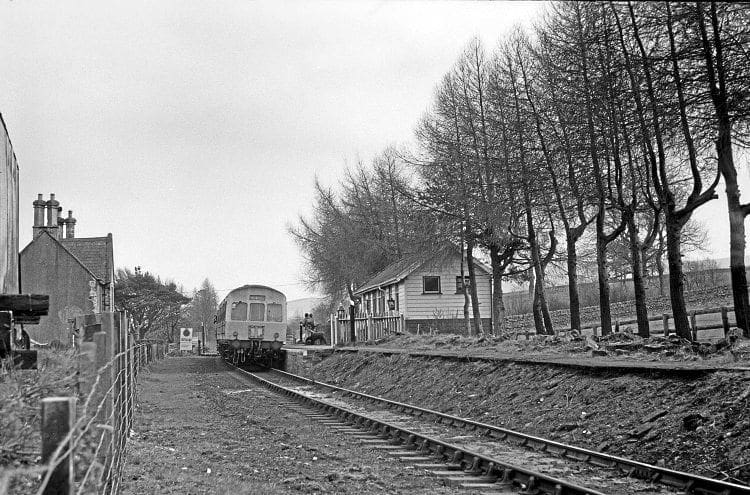
The passenger services in NER days were worked by Fletcher 0-4-4Ts, with normally two coaches coupled into push-pull units. In LNER days G5 0-4-4Ts and A8 4-6-2Ts became the norm, and finally, in BR days, it was LMS 4MTs, LNER J39 0-6-0s and two BR 3MT 2-6-0s – Nos. 77011 and 77014 – all supplied from Blaydon shed (52C).
For the freight services, J21, J25 and J39 0-6-0s and LMS 4MT 2-6-0s were used. It was quite common for the morning and evening passenger trains to be double-headed as it was a convenient way to move a locomotive for shunting work at Alston or to pick up a freight. The single-road engine shed at Alston was a sub shed of Blaydon and was capable of accommodating one tender locomotive.
The Alston branch was never an economic success. No sooner had it opened did the lead mining industry go into decline. Although there were some lead mines which continued in production into the 20th century, the lead mining bonanza which the promoters of the Alston branch were hoping for never materialised.
Coal traffic did bring some compensation with the collieries at Coanwood and Lambley.
Coanwood continued working until 1944 and Lambley finally closed on August 16, 1958
when the final rail-borne coal was moved across Lambley Viaduct. Cost cutting measures started in 1954 when Featherstone Park and Slaggyford became unstaffed, followed by Coanwood in 1955. Lambley became unstaffed in 1966 and Alston on January 6, 1969.
Trains gave way to road
The engine shed at Alston was closed on September 27, 1959 when DMUs (Metro-Cammell Class 101) replaced steam on the passenger services. Goods services were withdrawn from the branch on September 6, 1965 and the train shed roof at Alston was removed in 1967. In 1966 the ‘one-engine-on- the-branch’ system was introduced, allowing Coanwood, Lambley and Alston signalboxes to be closed. The crossing gates at Featherstone Park and Coanwood were removed and passenger trains gave way to road vehicles at the crossings.
The final steam working to Alston was on March 26, 1967 when the branch was visited by Ivatt 4MT 2-6-0 No. 43121, hauling the Branch Line Society and Stephenson Locomotive Society ‘Scottish Rambler No. 6’ railtour.
The Alston branch remained a lifeline to the sparse communities in the South Tyne Valley, particularly during winter months when many of the roads were frequently impassable due to snow. In 1963 the branch was earmarked for closure but the Minister for Transport, Ernest Marples, announced a reprieve due to the hardship closure would cause.
In November 1970 British Railways again proposed closure, and following a long period of consultations the Transport Users Consultative Committee announced services could be withdrawn when an ‘all-weather’ road linking Lambley and Coanwood was built and a bus service between Haltwhistle and Alston was introduced. Earnings from the line were quoted as being £4,000 each year, but the annual subsidy was £77,000!
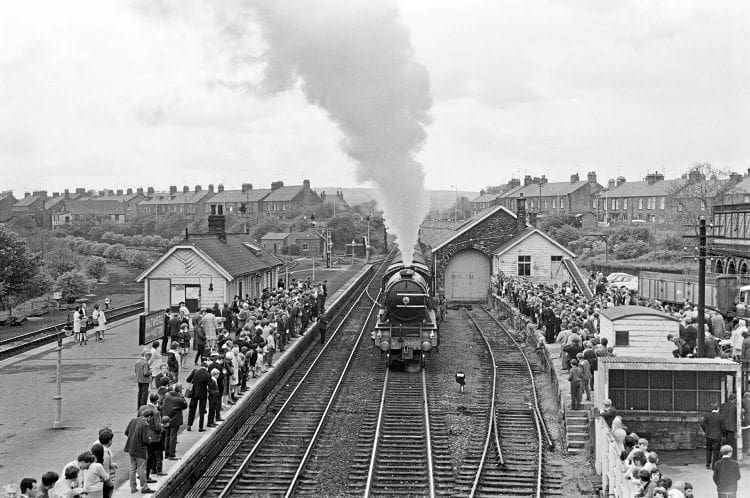
Line finally closed
The South Tynedale Railway Preservation Society was formed in April 1973 under the chairmanship of Eddie Dyke, with the aim of buying the whole branch from BR, and quickly set about trying to gain membership and raising funds. The South Tynedale Railway Company followed in January 1975 with the issuing of shares, but the economic turmoil of the 1970s and the absence of the grant aid systems, which are in place today, meant sufficient funds could not be found.
The BR asking price was £160,000 for the whole branch and in March 1977 BR offered the Cumbrian section from Alston to Gilderdale for £40,800, but unfortunately again the STRPS could not raise the money. Lord Ridley, chairman of Northumberland County Council, offered a suggestion that the £300,000 expenditure could be used in the construction of the ‘all-weather’ road, instead of being used to buy the branch from BR, and then leased to the STRPS. Sadly, this fell on deaf ears and the line finally closed on May 3, 1976, with the last services on Saturday, May 1.
On that day 5,000 passengers travelled on the scheduled services, the DMUs having been increased from two coaches to four during the last week of operations to cater for the huge influx of passengers. The final train left Alston at 9.09pm to the accompaniment of a lament played by two pipers and a crescendo of exploding detonators. BR quickly set about lifting the track and by June 1977 all had been removed.
The South Tynedale Railway Preservation Society did not give up, but instead decided on a plan which would match its funds. At the annual general meeting on July 2, 1977 the decision was made to build a 2ft-gauge railway from Alston to the Cumbria county border at Gilderdale, followed by an extension to Slaggyford, in Northumberland.
On February 16 1979 Cumbria County Council completed the purchase from BR of Alston station and the trackbed from Alston to Gilderdale, and agreed to lease it all to the STRPS.
The society started construction work and on Saturday, July 30, 1983, seven years after closure, the first rail passengers travelled out of Alston on a journey of just over one mile to Gilderdale Halt. The 1984 operating season started at Easter and on Friday, May 25 the Earl of Carlisle officially opened the first section by unveiling a commemorative plaque in the wall below the nameboard at the north end of Alston station.
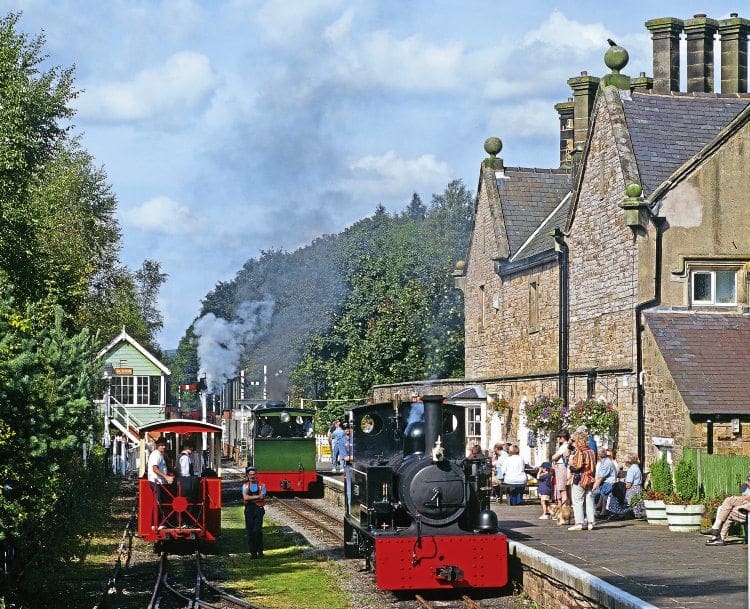
Work continued in extending the railway and Gilderdale station, just south of the viaduct, over Gilderdale Burn, was opened to passengers when the first Santa special on December 13, 1986 brought passengers to this station, 1½ miles out of Alston.
Delightful journey
The railway has continued to grow and now is 3½ miles long, with the present terminus at Lintley. It is a delightful journey through beautiful countryside; the sedate speed allows passengers to fully appreciate the journey.
In March 2014 The South Tynedale Railway was awarded a £4.2m Lottery Fund grant, which will be used to fund the extension to Slaggyford, a second platform at Alston, and the reinstatement of a trainshed roof over the two platforms.
Once Slaggyford is reached the society’s sights will then be set on Haltwhistle and the complete reopening of the branch. There are some obstacles to overcome, particularly the installation of a bridge over the A69 Haltwhistle bypass, but fortunately Lambley Viaduct and the Alston Arches viaduct remain, both in very good condition. This was not always the case and in 1993 a footpath under Lambley Viaduct had to be closed because of the danger from falling masonry.
In 1991 the British Rail Property Board was anxious to divest itself of disused railway structures and put out a for sale notice –
‘50 Victorian viaducts at £1 each’.
In March 1993 the North Pennines Heritage Trust agreed to take over the management of Alston Arches and Lambley viaducts if they were repaired. This would be similar to the arrangements that had been put in place for the successful renovation of Smardale Viaduct on the NER route from Kirby Stephen East to Appleby, which the trust managed.
Substantial repairs were required at Lambley Viaduct, with the bill coming to £660,000.
The repair work was undertaken and at a ceremony on the viaduct on September 3, 1997 the two viaducts were formerly handed over to the North Pennines Heritage Trust.
This is not the end of the story as in November 2013 the responsibility for both viaducts was transferred from the Heritage Trust to the South Tynedale Railway, thereby giving the railway some hope that one day its ultimate aim will be achieved when passengers can once again travel by rail from Haltwhistle to Alston.
Read more News and Features in Issue 232 of HR – on sale now!
Archive enquiries to: Jane Skayman on 01507 529423 – [email protected]
Advert
 Enjoy more Heritage Railway reading in the four-weekly magazine. Click here to subscribe.
Enjoy more Heritage Railway reading in the four-weekly magazine. Click here to subscribe.




